Related Research Articles
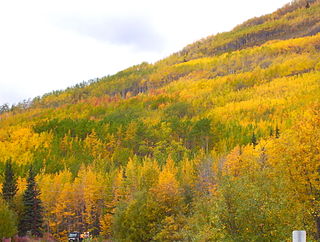
Cloning is the process of producing individual organisms with identical genomes, either by natural or artificial means. In nature, some organisms produce clones through asexual reproduction; this reproduction of an organism by itself without a mate is known as parthenogenesis. In the field of biotechnology, cloning is the process of creating cloned organisms of cells and of DNA fragments.

An embryo is the initial stage of development for a multicellular organism. In organisms that reproduce sexually, embryonic development is the part of the life cycle that begins just after fertilization of the female egg cell by the male sperm cell. The resulting fusion of these two cells produces a single-celled zygote that undergoes many cell divisions that produce cells known as blastomeres. The blastomeres are arranged as a solid ball that when reaching a certain size, called a morula, takes in fluid to create a cavity called a blastocoel. The structure is then termed a blastula, or a blastocyst in mammals.

Przewalski's horse, also called the takhi, Mongolian wild horse or Dzungarian horse, is a rare and endangered horse originally native to the steppes of Central Asia. It is named after the Russian geographer and explorer Nikolay Przhevalsky. Once extinct in the wild, since the 1990s it has been reintroduced to its native habitat in Mongolia in the Khustain Nuruu National Park, Takhin Tal Nature Reserve, and Khomiin Tal, as well as several other locales in Central Asia and Eastern Europe.
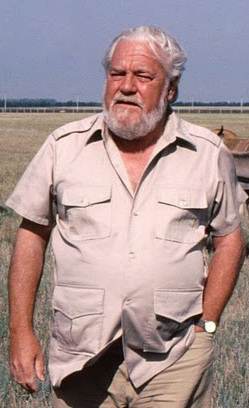
Gerald Malcolm Durrell, was a British naturalist, writer, zookeeper, conservationist, and television presenter. He founded the Durrell Wildlife Conservation Trust and the Jersey Zoo on the Channel Island of Jersey in 1959. He wrote approximately forty books, mainly about his life as an animal collector and enthusiast, the most famous being My Family and Other Animals (1956). Those memoirs of his family's years living in Greece were adapted into two television series and one television film. He was the youngest brother of novelist Lawrence Durrell.

Ex situ conservation is the process of protecting an endangered species, variety, or breed of plant or animal outside its natural habitat. For example, by removing part of the population from a threatened habitat and placing it in a new location, an artificial environment which is similar to the natural habitat of the respective animal and within the care of humans, such as a zoological park or wildlife sanctuary. The degree to which humans control or modify the natural dynamics of the managed population varies widely, and this may include alteration of living environments, reproductive patterns, access to resources, and protection from predation and mortality.
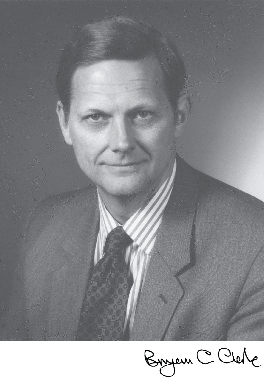
Bryan Campbell Clarke was a British Professor of genetics, latterly emeritus at the University of Nottingham. Clarke is particularly noted for his work on apostatic selection and other forms of frequency-dependent selection, and work on polymorphism in snails, much of it done during the 1960s. Later, he studied molecular evolution. He made the case for natural selection as an important factor in the maintenance of molecular variation, and in driving evolutionary changes in molecules through time. In doing so, he questioned the over-riding importance of random genetic drift advocated by King, Jukes, and Kimura. With Professor James J Murray Jnr, he carried out an extensive series of studies on speciation in land snails of the genus Partula inhabiting the volcanic islands of the Eastern Pacific. These studies helped illuminate the genetic changes that take place during the origin of species.

Edinburgh Zoo, formerly the Scottish National Zoological Park, is an 82-acre (33 ha) non-profit zoological park in the Corstorphine area of Edinburgh, Scotland.

Noah's Ark Zoo Farm is a 100-acre (40 ha) zoo developed on a working farm in Wraxall, North Somerset, 6 miles (9.7 km) west of Bristol, England. It is home to the largest elephant facility in northern Europe.

Dame Anne Laura Dorinthea McLaren, was a British scientist who was a leading figure in developmental biology. She paved the way for women in science and her work helped lead to human in vitro fertilisation (IVF). She left an enduring legacy marked by her research and ethical contributions to the field. She received many honors for her contributions to science, including election as fellow of the Royal Society.
ARKive was a global initiative with the mission of "promoting the conservation of the world's threatened species, through the power of wildlife imagery", which it did by locating and gathering films, photographs and audio recordings of the world's species into a centralised digital archive. Its priority was the completion of audio-visual profiles for the c. 17,000 species on the IUCN Red List of Threatened Species.
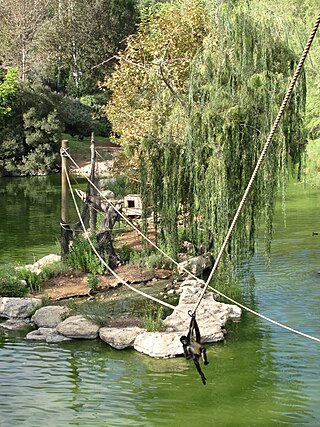
The Tisch Family Biblical Zoo in Jerusalem, popularly known as the Jerusalem Biblical Zoo, is a zoo located in the Malha neighborhood of Jerusalem. It is famous for its Afro-Asiatic collection of wildlife, many of which are described in the Hebrew Bible, as well as for its success in breeding endangered species. According to Dun and Bradstreet, the Biblical Zoo was the most popular tourist attraction in Israel from 2005 to 2007, and logged a record 738,000 visitors in 2009. The zoo had about 55,000 members in 2009.

The northern white rhinoceros or northern white rhino is one of two subspecies of the white rhinoceros. This subspecies is a grazer in grasslands and savanna woodlands. Formerly found in several countries in East and Central Africa south of the Sahara, since 19 March 2018, there are only two known rhinos of this subspecies left, named Najin and Fatu, both of which are female; barring the existence of unknown or misclassified male northern white rhinos elsewhere in Africa, this makes the subspecies functionally extinct. The two female rhinos belong to the Dvůr Králové Zoo in the Czech Republic but live in the Ol Pejeta Conservancy in Kenya where they are protected by armed guards.
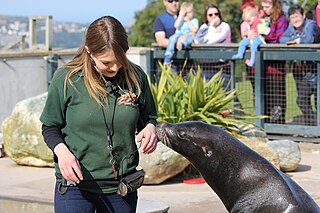
A zoo is a facility in which animals are kept within enclosures for public exhibition and often bred for conservation purposes.

The Korea Central Zoo, also referred to as the Pyongyang Central Zoo, is the national zoo of North Korea. It is located near Taesŏngsan mountain in downtown Pyongyang. The zoo has over 5,000 wild animals, comprising a total of 650 species, and covers an area of roughly one square kilometre. It was reportedly established in April 1959 at the instruction of Kim Il Sung.
A frozen zoo is a storage facility in which genetic materials taken from animals are stored at very low temperatures (−196 °C) in tanks of liquid nitrogen. Material preserved in this way can be stored indefinitely and used for artificial insemination, in vitro fertilization, embryo transfer, and cloning. There are a few frozen zoos across the world that implement this technology for conservation efforts. Several different species have been introduced to this technology, including the Pyrenean ibex, Black-footed ferret, and potentially the white rhinoceros.
Scovill Zoo in Decatur, Illinois, is one of 210 zoos accredited by the Association of Zoos and Aquariums with 96 species spanning six continents and around 500 animals in residence. The zoo originally started out as a farm in 1967 when the Kiwanis Club donated money for its construction. Scovill Zoo has its own chapter of the AAZK or American Association of Zoo Keepers. The zoo participates in a large number of conservation projects and education.
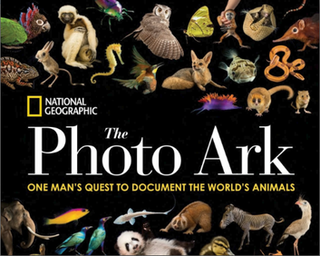
The Photo Ark is a National Geographic project, led by photographer Joel Sartore, with the goal of photographing all species living in zoos and wildlife sanctuaries around the globe in order to inspire action to save wildlife.

Michael William Bruford was a Welsh molecular ecologist, conservation biologist and a professor at Cardiff University's School of Biosciences. His area of research spanned from animal wildlife genetics to the management of captive populations and livestock breeds to animal biobanking. After earning his B.Sc. from the University of Portsmouth and his PhD from the University of Leicester, Bruford worked at the Zoological Society of London where he became Head of Conservation Genetics before joining Cardiff University as reader in 1999 and professor in 2001. In addition to his research activities at Cardiff University, he was also director of the Frozen Ark project, which seeks to preserve threatened animal species by means of cryopreservation.
Ann G. Clarke is a British immunologist and co-founder of the Frozen Ark project.
References
- ↑ Kettlewell, Julianna (27 July 2004). "'Frozen Ark' to save animal DNA". BBC News. Retrieved 19 July 2010.
- ↑ Johnstone, Helen (27 July 2004). "Endangered species gain a place on Frozen Ark". The Telegraph. Archived from the original on 18 January 2010. Retrieved 19 July 2010.
- ↑ "Frozen Ark could change the World". 23 January 2006. Archived from the original on 10 October 2006. Retrieved 19 July 2010.
- ↑ "Ann Clarke on The Frozen Ark". The Life Scientific. BBC Radio 4. 2 May 2017. Retrieved 9 February 2020.
- ↑ "People". The Frozen Ark. Archived from the original on 12 November 2019. Retrieved 9 February 2020.
- ↑ The Frozen Ark: About — Mike Bruford Archived 4 February 2021 at the Wayback Machine . Retrieved 30 January 2021.